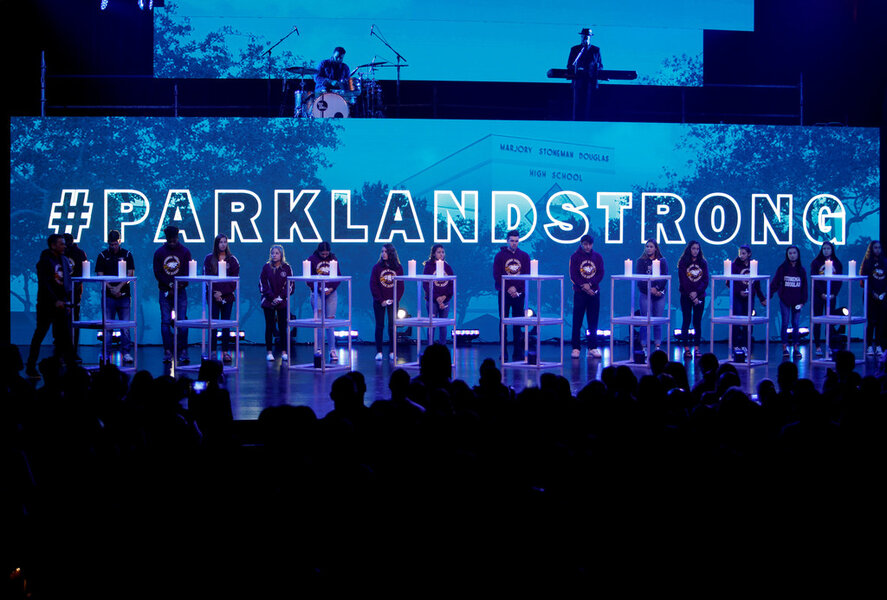More than one way to prevent mass shootings
Loading...
After the 2015 shooting that killed nine people in a Charleston, S.C., church, many in the predominantly African-American congregation forgave the young white male gunman. In doing so, they hoped not only to heal the hatred they felt but the hatred in him that motivated the crime. In addition, they hoped their forgiveness might enable them to better reach others prone to violence and perhaps prevent a similar massacre.
In contrast, the killing of 17 people at the high school in Parkland, Fla., has yet to reveal much forgiveness toward the shooter. The anger over the murders, especially among Parkland students, is directed mainly at elected officials and the cause of controlling access to guns, especially assault rifles. That debate should not be deflected or weakened. Yet at the same time, the United States can tackle the issue of whether better qualities of care in society – including the role of forgiveness – might help prevent a similar shooting.
A good example of this approach is what came after the 2012 killing of 20 first-graders and six adults at Sandy Hook Elementary School in Newtown, Conn. A special commission set up by the governor urged “adoption of a new model of care, one that emphasizes wellness while effectively and compassionately addressing illness; that places positive child development and healthy families front and center; and that breaks down existing silos to provide holistic and continuous care across the population.”
In addition to enacting stricter gun laws, Connecticut has raised the level of community care for young people. In many states, the events at Sandy Hook led to an increase in spending on mental health programs for all students.
The point is not to associate mass violence with mental illness. Such a stigma must be avoided, especially as those with emotional issues rarely resort to violence against others. Instead those dealing with young people – parents, teachers, coaches, school administrators, and others – should be encouraged and trained to assist all children in adopting habits of empathy, self-governance, and mastery over emotional vulnerabilities. The goal is to improve mental health for all so as to better deal with mental illness in the few.
Schools, for example, need to focus as much attention on each student’s qualities of character as they do on academics. They must question the widespread use of suspension and expulsion for what amounts to minor infractions. They must better coordinate with professional counselors, police, and state officials when handling kids who disrupt the school environment. And they must remove the stigma on students who seek care for personal problems.
In the case of the Parkland shooter, “We missed the signs,” Beam Furr, mayor of Broward County, told the Miami Herald. “We should have seen some of the signs.” The Florida Department of Children and Families, for example, found the young man to be a “low level of risk” in 2016.
Perhaps one lesson from this shooting could be that teachers need more support and resources in instilling good behavior as well as in correcting bad behavior. Schools must ensure teachers have the mental readiness to deal with the mental challenges from all students – rather than simply sending a child to the principal’s office or to the school psychologist. By that point, children will see themselves as tagged with “issues.”
The US has steadily improved support of character building in students. This struggle is not new. After one of the earliest cases of campus violence – the 1966 shootings by a student from a tower at the University of Texas – a special task force set the goal to provide care for all students, not just those in trouble. “We should not insist that a student has to be in difficulty to qualify for attention,” wrote the school regent, Rabbi Levi Olan.
As more schools adopt such an approach, the quality of care among those working with young people can help prevent school violence – even as legislators grapple with calls for more gun control.







